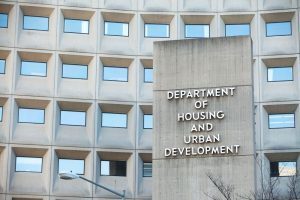 At the Real Deal’s annual Showcase & Forum, Department of Housing and Urban Development (HUD) Director Ben Carson discussed the success of Opportunity Zones, which provide tax benefits to developers who invest in thousands of distressed areas across the country.
At the Real Deal’s annual Showcase & Forum, Department of Housing and Urban Development (HUD) Director Ben Carson discussed the success of Opportunity Zones, which provide tax benefits to developers who invest in thousands of distressed areas across the country.
“Through Opportunity Zones, the federal government is helping foster partnerships between people who may have never sat at the same table before,” he said. “Community leaders, public housing advocates, investors, builders, state officials and federal officials.”
According to Director Carson, HUD will give preference to developers and investors who build affordable housing in federal Opportunity Zones when it comes to certain grants. He also responded to criticism as to whether the program will actually incentivize investment in low-income areas.
“People complained that Opportunity Zones are just a way for rich people to get richer,” he told the audience. “The fact of the matter is that the rich are going to get richer anyway.”
According to a report from ATTOM Data Solutions earlier this year, homes in Opportunity Zones are cheaper than the average home.
The report found that roughly 80% of these zones had median home prices in the Q2 2019 that were below the national figure of $266,000, and that half had median prices of less than $150,000.
Additionally, Compared to the surrounding regions, median Q2 2019 prices in about one in four zones were less than 50% of the typical value in the Metropolitan Statistical Areas where they exist. Within Opportunity Zones, 86% had median Q2 2019 sales prices that were less than the median sales price for the surrounding Metropolitan Statistical Area (MSA). Roughly 26% had median sales prices less than half the figure for the MSA. Only 14% had median sales prices that were equal to or above the median sales price in the MSA.
“Opportunity Zones are among the poorest areas of the country, with some of the lowest home prices. This should come as no surprise because the zones are designed to be in or alongside economically distressed neighborhoods,” said Todd Teta, Chief Product Officer with ATTOM Data Solutions. “But the differences between these and other areas in most parts of the nation are stark. The numbers provide key benchmarks for how much room there is for these areas to grow and how much new investment they need.”

 DSNews The homepage of the servicing industry
DSNews The homepage of the servicing industry









